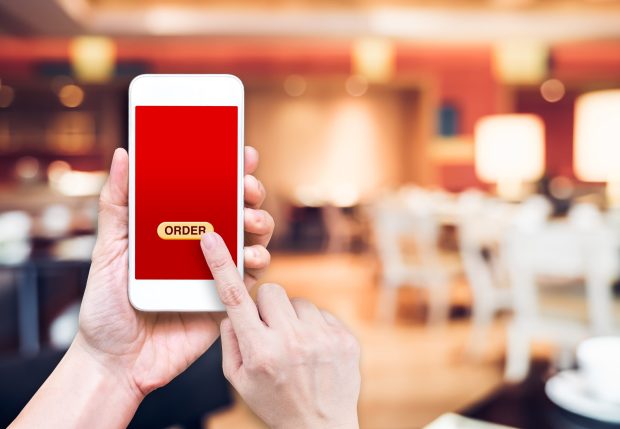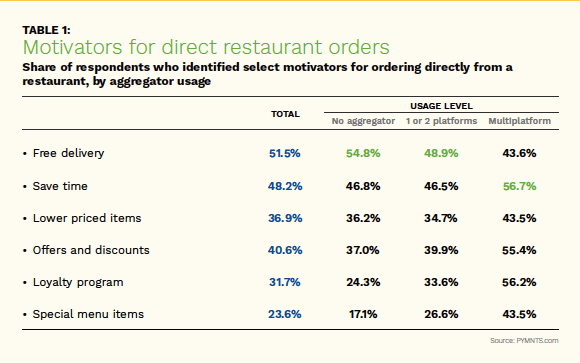Deep Dive: How Efficient Delivery, Advanced Tools and Loyalty Can Help Restaurants Keep up With Aggregators in 2022

Food delivery aggregators were once considered rarities reserved for special occasions, primarily used by young, tech-savvy consumers, but they have fast become a staple in many American households that defy any single demographic. The pandemic has made Americans’ desire for seamless, customizable dining experiences more apparent, with more consumers now preferring the ease of convenient, frictionless, aggregator-assisted ordering experiences.
This development has expanded restaurants’ reach, made at-home dining a more convenient staple of many consumers’ lives and allowed virtual “ghost” kitchens to crop up across the country. It has forever altered the restaurant industry and consumers’ dining habits.
The pandemic may have been the primary driver behind aggregators’ growth, but the trend is unlikely to reverse course even when consumers return to normal activities. Restaurants and food-service brands that wish to engage consumers and retain their loyalty with aggregators on the rise would be wise to adopt digital features that improve purchasing convenience and efficiency.
The Disruption at the Heart of the Frictionless Ordering Experience
The delivery revolution, especially where aggregators are concerned, has not happened without disruption. Even major chains such as Domino’s have complained that aggregators’ high delivery fees cut into profits, creating friction between restaurants and these platforms.
Many restaurant owners and executives initially welcomed the delivery innovations offered by aggregators and delivery apps. Restaurant owners and managers were happy to leave logistical challenges to someone else so they could better focus on planning menus, preparing food and serving customers.
Aggregators charge hefty fees — often as high as 30% — that can hurt restaurants’ bottom lines, but restaurants were previously willing to pay these fees in hopes that online orders would represent a small share of their business. They also hoped that these experiences would help them engage new customers who would eventually visit the restaurant and become regulars.
However, the pandemic and ensuing lockdowns turned the traditional restaurant business model upside down, making it clear that takeaway is here to stay, with even dine-in stalwarts such as Olive Garden noting that one-third of recent orders have been consumed off-premises. If these changes were not dizzying enough, an even greater threat has emerged with which restaurants must compete: the ghost kitchen.
Ghost kitchens, also called virtual kitchens, are kitchen operations that exist entirely to prepare food for delivery without a storefront. The growth of delivery apps and aggregators has facilitated ghost kitchens’ rise in popularity, and these facilities have several notable advantages over traditional restaurants. They operate far leaner operations with agile cost structures and faster experimentation cycles, and they can aggressively discount to acquire new customers. Traditional restaurants are now relying on many of the same tactics to remain competitive.
Encouraging Customer Loyalty
Customers are not oblivious to the impact that fees have on their favorite restaurants, especially when high fees and decreased profit margins hit their wallets. Nearly half of restaurant consumers say prices are higher now than they were previously when buying directly from restaurants — 44% for quick service restaurants (QSRs) and 47% for table-service restaurants. It is telling that one of the top reasons why consumers would order directly from restaurants rather than from aggregators would be to receive free delivery, cited by 52% of all restaurant customers.
Another major reason customers forgo aggregators and order directly from re staurants is loyalty programs. This is even the case for consumers who use multiple delivery aggregator platforms, with 56% of these multi-platform users indicating that they seek access to loyalty offerings when they order from restaurants. Promotions and discounts are another big draw, with 55% of multiplatform restaurant customers citing them as a reason to order directly.
staurants is loyalty programs. This is even the case for consumers who use multiple delivery aggregator platforms, with 56% of these multi-platform users indicating that they seek access to loyalty offerings when they order from restaurants. Promotions and discounts are another big draw, with 55% of multiplatform restaurant customers citing them as a reason to order directly.
The main takeaways are that customers do not like delivery fees and like getting deals. These may seem like obvious points, but they have big implications for restaurants and aggregators. Consumers may appreciate the convenience that aggregators offer, but they will skip these platforms if it means collecting loyalty points or slicing a few dollars off their order. Loyalty is a prime consideration, with one PYMNTS study finding that customers who belong to a loyalty program spend more than twice as much on takeout as those who do not.
Improving Efficiency, Speed and Quality
The current delivery scene would not be possible without the continued development of advanced technology. Aggregators use the latest tools to streamline the delivery process, but there are ways for restaurants to stay in the game using new technologies. Innovations in artificial intelligence (AI), the Internet of Things, data science and location intelligence are transforming the space, with geocoding and location intelligence tools enabling the precise mapping of delivery addresses — and allowing agents to reach customers while their orders are still hot from the kitchen.
Food delivery businesses can also leverage advanced route planning, which can help them accelerate order scheduling and determine the optimal route for each order within seconds. There are also tools such as smart routing, which accounts for logistical hurdles, reduces mileage for delivery drivers and helps restaurants realize costs savings from decreased fuel consumption. AI-enabled allocation software can also allow managers to assign delivery tasks based on multiple factors, such as proximity to a restaurant, customer location when they placed their order or the delivery person’s preferred service area.
Technologies can also give restaurants real-time visibility into their deliveries, helping them flexibly adjust to unforeseen obstacles. Predictive analytics and personalization can help restaurants understand what customers want even before they place orders, and special offers sent via loyalty programs can keep favorite restaurants top-of-mind even when customers cannot visit in person.
Leveraging logistics technology can hold the key to helping restaurants fix the gaps in their last mile while ensuring customer satisfaction and staying ahead of the curve. Seamless ordering solutions and incentives like meaningful discounts and loyalty programs can help add value for customers, giving restaurants an edge over other restaurants and aggregators in the years ahead.
